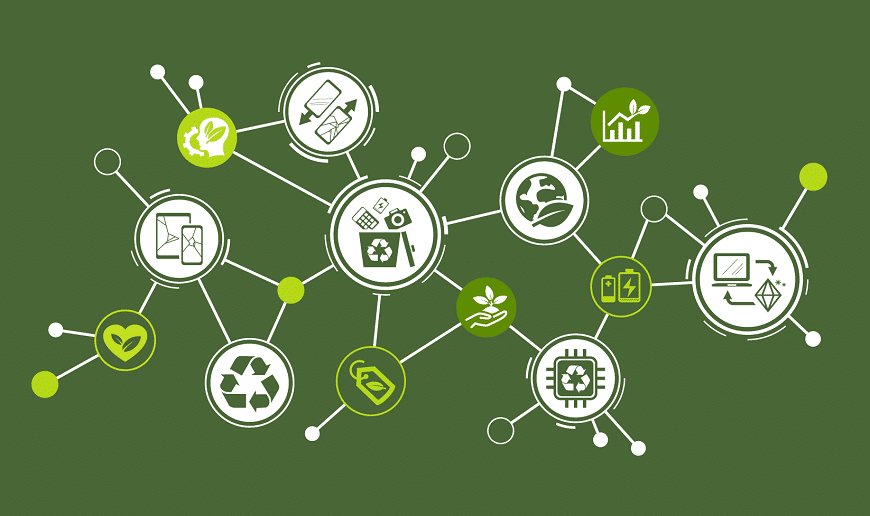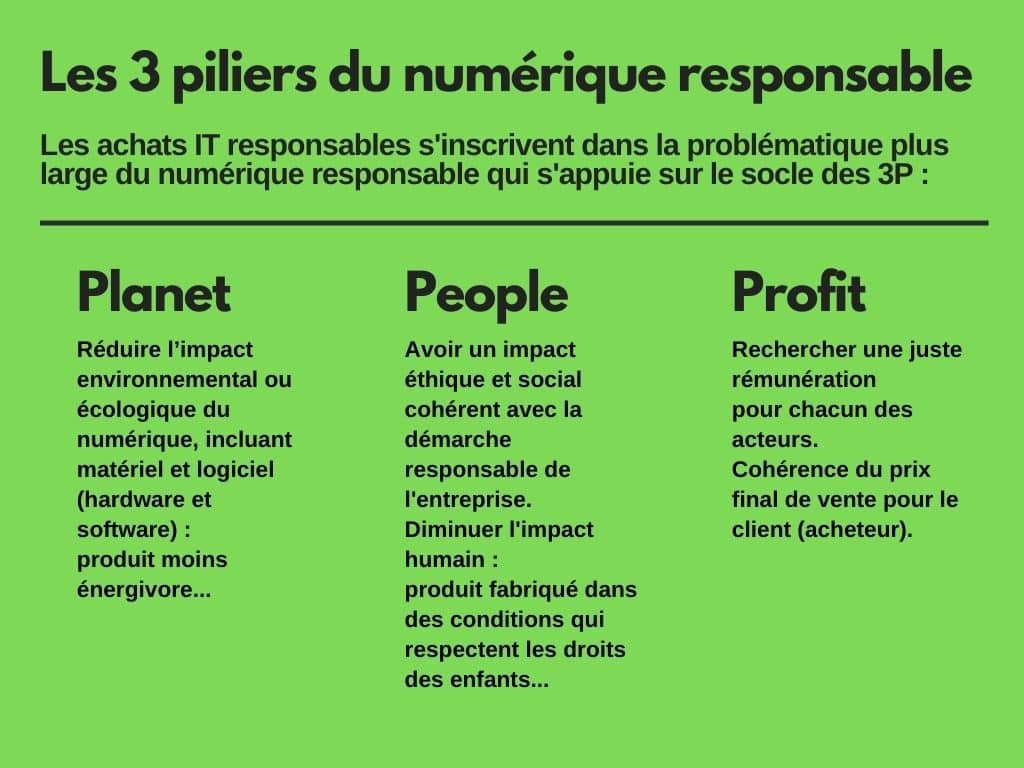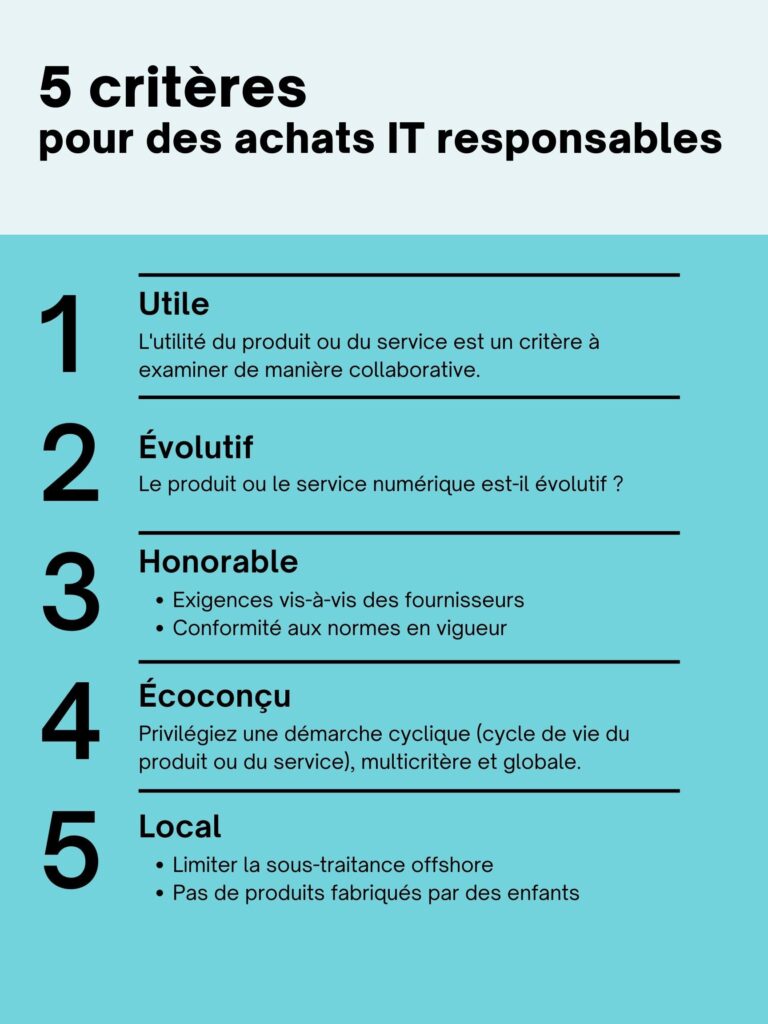The issue of responsible IT purchasing should become more and more important in companies. Indeed, the law of November 15, 2021 aimed at reducing the environmental footprint of digital technology in France – known as the REEN law – is one of the markers of growing emulation for responsible digital technology. But how to implement a responsible IT purchasing strategy? An update with Jean-Anaël Gobbe, digital services quality specialist, specialized in green IT.

Companies are increasingly concerned about the impact of their IT purchases. The idea is that they are more consistent with their values and/or the expectations of their various stakeholders.
This translates, in particular, into IT purchases that they want to be increasingly responsible for both hardware and software.
And this, in the three dimensions of responsible digital or 3P: Planet, People, Profit.

A responsible IT purchasing policy is in fact at the heart of a coherent and attractive CSR approach. On the one hand, it helps to retain the company's current employees and attract new talent. It also contributes to a positive image towards partners, suppliers and customers. Its benefits for the company are therefore multiple.
But, concretely, where to start?
5 essential criteria for responsible IT purchases
To get off to a good start with its responsible IT purchasing policy, the company must start by defining what responsible purchasing is.
To do this, it can be based on 5 essential criteria: useful, scalable, honorable, eco-designed, local.

Taking these criteria into account is specific to each company. It can also vary depending on whether we consider a service or a product. When questioning the usefulness, it is desirable to involve the people concerned in a collaborative manner. For example: developing a framework via an online spreadsheet (Google Sheets). This is one of the aspects covered in the training Responsible IT purchasing.
Ask yourself why you make a purchase
Thinking about the usefulness of the digital product or service is like asking yourself why you make a purchase. Does it contribute to the proper functioning of economic activity and the productivity of the company? This is also the starting point of the link between the information system (IS) and the regulation of a responsible purchasing policy in IT.
Digital sobriety at the heart of a responsible IT purchasing strategy
In the ideal framework of an optimized, fast and secure IS, digital sobriety constitutes the major link between purchasing and the IS.
Savings at stake
Digital sobriety must therefore guide the IT purchasing strategy because it will seek economy from all points of view. First, by preventing the company from unnecessary functionalities of a digital product or service. Then because the economy will also be energetic, functional and financial.
More responsible use on the employee side
Digital sobriety is also considered on the user side, here the company's employees, since purchases are often intended for them. Raising awareness and educating employees about more responsible use, which helps reduce needs, therefore seems preliminary to any other action.
“Do more with less”
Once operational, such a sobriety approach will make it possible to do more with less but above all to do more with better. Indeed, sobriety rhymes with quality. This therefore implies an immediate cost that is often more expensive... but it also causes a profitable rebound effect for the company with a economy of scale and significant replacement.
An environmental economy at the service of the company's image
According to'Ademe, the environmental saving would be of the order of 169 kg of CO2eq for a laptop, 189 kg of CO2eq for a desktop computer and 236 kg of CO2eq for a 21.5-inch screen.
Refurbished, repairable, reusable: the key words of responsible IT purchasing
Favoring reconditioned and/or repairable equipment as well as reuse circuits is at the heart of a responsible IT purchasing strategy.
Over the past ten years, networks for taking back professional digital equipment for reuse have developed. Contrary to popular belief, safety and reliability are there. And many other initiatives are being launched every day. For example, Telecoop, a cooperative telecom operator, offers “sobriety” packages to professionals. For his part, Computer doctor provides in particular troubleshooting and maintenance of computer equipment for professionals who do not have an integrated IT service (for VSEs/SMEs, in particular). And this, locally thanks to its network of agencies established in France.
A responsible IT purchasing policy therefore allows the company to develop its leadership, adapt to market developments and establish a climate of trust with partners and customers. It’s also a winning strategy in terms of image! To communicate its commitment, the company can sign the Responsible Digital Charter. In addition to the question of responsible IT purchasing, it will thus affirm its involvement in the optimization of digital tools, ethical digital practices and the development of accessible services.


